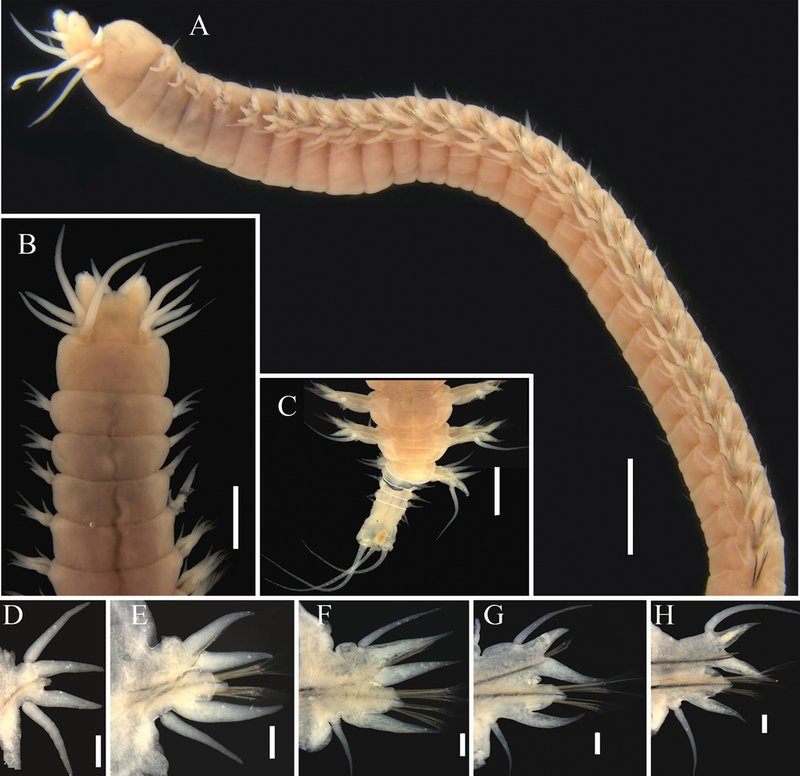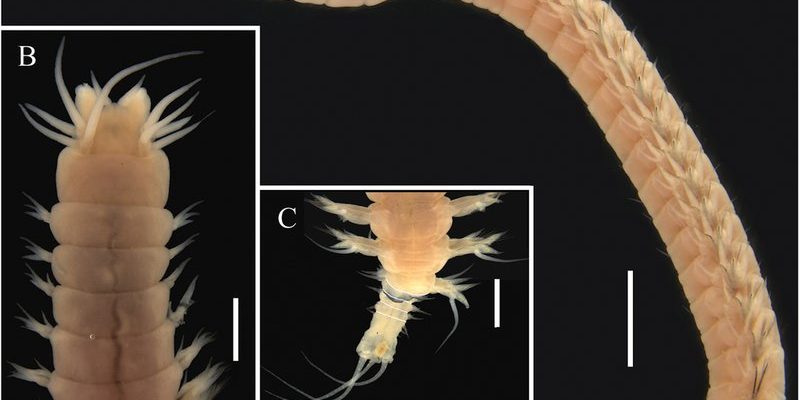
Understanding these worm species not only helps us appreciate their diversity but also sheds light on their ecological importance. So, grab a cup of coffee, and let’s dig into the muddy depths of marine worm life together!
Nereis virens is a type of polychaete worm found primarily in marine environments, particularly in sandy or muddy substrates. These worms can grow up to 10-15 inches long and are easily recognized by their segmented bodies, which are adorned with bristle-like structures called *chaetae*. This makes them look a bit like a tiny, wriggling centipede!
These creatures are often best known for their reddish hue, which comes from the hemoglobin in their blood. This adaptation allows them to thrive in low-oxygen environments, making them incredibly resilient. Sandworms are more than just colorful inhabitants of the ocean; they play a crucial role in aerating the sand and recycling nutrients. By burrowing through the sediment, they help facilitate the growth of beneficial microorganisms and improve the overall health of their habitat.
You might be wondering, “Why should I care about these worms?” Well, besides being essential for the ecosystem, they also play an important role in the fishing industry. They are often used as bait for fish, particularly in recreational fishing, which means their health directly impacts fishing communities.
Polychaetes are a large class of annelids that include a wide variety of marine worms. With over 10,000 known species, they can be found in nearly every marine environment, from shallow coastal waters to the deep sea. Like Nereis virens, most polychaetes have segmented bodies and often possess bristles or chaetae.
What sets polychaetes apart is their incredible diversity. They can be free-swimming, burrowing, or even tube-dwelling. Some polychaetes, like the fireworm (*Hermodice carunculata*), are known for their painful bristles that can sting when touched. In contrast, others like the lugworm (*Arenicola marina*) are gentle giants that work their way through the sand, contributing to nutrient cycling.
Polychaetes are essential players in their ecosystems. They perform tasks like breaking down organic materials, enriching sediments, and serving as a food source for various marine animals. This diversity allows for different feeding strategies and interactions within their environments, which keeps the marine ecosystem balanced.
While Nereis virens shares many features with other polychaetes, several distinct characteristics set it apart from its relatives. Here’s how Nereis virens compares to a couple of notable polychaetes:
- Nereis Virens vs. Arenicola Marina (Lugworm)
While both worms are found in similar habitats, lugworms have a more U-shaped body and are known for their characteristic burrowing behavior. They create J-shaped tunnels in sandy environments, feeding on organic matter. In contrast, Nereis virens are more flexible and can move quickly through the sediment, making them effective predators.
- Nereis Virens vs. Hermodice Carunculata (Fireworm)
The fireworm is colorful and known for its painful bristles. Unlike Nereis, which primarily feeds on detritus and small organisms, fireworms are more aggressive and feed on coral and live prey. This feeding behavior can have significant implications for coral reefs, while Nereis virens supports the overall health of marine habitats by recycling nutrients.
Each of these species has unique adaptations and roles within the ecosystem. Understanding these differences helps us appreciate the complex web of life that exists in our oceans.
The Role of Nereis Virens in the Ecosystem
So, what exactly does Nereis virens do in its habitat? These sandworms are like little janitors of the ocean floor. As they burrow through the sediment, they help aerate the sand, which is crucial for the growth of microorganisms. This aeration process allows oxygen to reach deeper layers, supporting a healthy ecosystem.
Additionally, Nereis virens feeds on organic matter, breaking it down and recycling nutrients back into the environment. This is essential because it helps to maintain the nutrient balance in marine ecosystems. Healthy sediments support diverse marine life, including fish and invertebrates, which rely on these nutrients for growth and survival.
You might also see them serving as a food source for various marine animals. Fish, birds, and other sea creatures rely on sandworms to meet their dietary needs. This interconnection between species illustrates how Nereis virens plays a pivotal role in sustaining life in its habitat.
Habitat and Distribution of Nereis Virens
Nereis virens primarily inhabits sandy and muddy bottoms along coastlines, making it a common sight in intertidal zones and shallow waters. These worms thrive in environments with moderate wave action, which helps keep the sediment stirred up and oxygenated. They are often found in estuaries, where fresh and saltwater mix, providing a rich nutrient source.
You might find Nereis virens along the eastern coast of North America, from New Jersey to Florida, as well as in parts of Europe. Their adaptability to various salinity levels and sediment types makes them capable of thriving in different habitats, allowing them to be one of the more widespread polychaetes.
Understanding where Nereis virens lives helps highlight the importance of coastal health. Healthy, undisturbed habitats ensure these worms can flourish, contributing to the broader marine ecosystem.
Conservation Concerns for Worm Species
As with many species, Nereis virens and other similar worm species face challenges in their habitats. Coastal development, pollution, and climate change are major threats that can impact their populations. Ocean acidification, for instance, can alter the delicate balance of marine ecosystems, affecting not just worms but the entire food web.
Additionally, overfishing and habitat destruction can significantly affect the availability of these worms as a food source for larger marine animals. If Nereis virens populations decline, it could lead to a chain reaction, affecting everything from fish stocks to seabirds.
Efforts to protect coastal habitats and promote sustainable fishing practices are essential for the survival of Nereis virens and its counterparts. By prioritizing marine conservation, we can help ensure that these fascinating creatures continue to thrive in their natural environments.
In exploring how Nereis virens compares to other worm species, we uncover the fascinating roles these creatures play in marine ecosystems. From their unique adaptations to their critical functions in nutrient cycling, sandworms are a vital part of ocean health. Understanding these relationships helps us grasp the complexities of marine life and underscores the importance of conservation efforts.
So, next time you think about the ocean, remember the unsung heroes like Nereis virens, working tirelessly below the surface to keep our oceans healthy. These tiny, wriggling wonders remind us of the intricate connections that sustain life in our waters and the need to protect the environments they call home.

